- Company Profile
- TAMURA Story
TAMURA Story
History
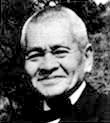 Management philosophy of Tamura Tokumatsu
Management philosophy of Tamura TokumatsuWe do not necessarily desire to become a large company, but our products must be the finest in the world. This is our mission.
Tamura Corporation was founded in 1924 as Tamura Radio Store and is one of Japan’s oldest electronics companies. Beginning with the introduction in 1935 of an in-house developed high-quality radio receiver transformer, Tamura has developed a stream of products, including a wide variety of transformer-related products, electronic chemicals, reflow soldering systems, LED lights, broadcast audio mixing consoles, and wireless microphones.
| 1924 | Inauguration of Tamura Radio Store in Shinjuku, Tokyo, Japan. |
| 1939 | Inauguration of Tamura Corporation. |
| 1961 | Listing in No.2 Tokyo Securities Exchange. |
| 1979 | Change of listing from No.2 to No.1 Tokyo Securities Exchange. |
| 【The Early Years】 | |||
| 1924 -1938 | 1924 | 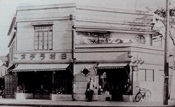 |
Tamura Radio Store is founded in Tokyo’s Shinjuku district a year before thestart of radio broadcasting in Japan. |
| 1932 |  |
The company, which at first imported, sold, and repaired radios, receives an order for electric phonographs from record manufacturer Polydor and simultaneously begins sales of own brand phonographs. | |
| 1935 |  |
The number of radio reception contracts in Japan exceeds two million. The company develops in-house the P72 low-frequency transformer, which greatly improves sound quality. | |
| 1937 |  |
Tamura moving-coil microphones are delivered for use at Asakusa InternationalTheater. They are subsequently introduced at broadcasting stations nationwide. | |
| 【Transition from a Radio Store to a Components Manufacturer】 | |||
| 1939 -1945 | 1939 | 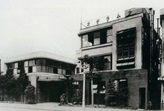 |
Tamura Corporation is established, signaling an ongoing transformation from local radio store to manufacturer of world-class products. |
| 1941 |
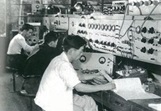 |
Tamura Corporation’s Kashiwagi Laboratory opens. Tamura develops products such as communication instruments and repeating coils, laying the foundation for the communication equipment business. | |
| 1944 |
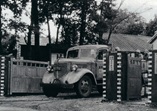 |
The Higashi-Oizumi Factory is completed in Higashi-Oizumi, Nerima Ward, Tokyo, and most business operations are transferred to the new factory. | |
| 【Post-war Recovery】 | |||
| 1946 -1967 | 1955 |
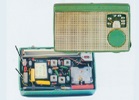 |
The first Japanese-made transistor radio, containing a Tamura compact transformer, is introduced. The radio becomes a blockbuster hit product, and Tamura begins full-scale mass production of consumer-use products. |
| 1956 |  |
Tamura develops SOLDERITE flux, Japan’s first noncorrosive soldering flux, and establishes a specialized chemistry laboratory within the company. | |
| 1961 | 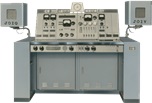 |
Coinciding with the soaring popularity of television in the home, Tamura develops its first audio mixing console for use as broadcast equipment. | |
| 1962 |  |
Tamura enters the low-power wireless device business. Tamura wireless microphones installed at stadiums for the Tokyo Olympic Games (1964) are used in recording of the official documentary film. | |
| 【International Expansion and Journey to the Pinnacle of the Consumer Business】 | |||
| 1968 -1979 | 1968 |  |
Vacuum tubes give way to transistors, and the use of printed circuit boards spreads rapidly. Tamura develops its first automated soldering system and subsequently provides support for the mass-production of home appliances. |
| 1969 |  |
Tamura establishes Taiwan Tamura Denshi Co., Ltd. as its first overseas production base with the objective of securing manpower and reducing costs to accommodate an increase in orders from the U.S. | |
| 1972 |  |
Building on its track record for highly reliable transformers, Tamura begins development of transformers and coils for use in Japan’s first satellites: the Ume ionosphere sounding satellite (ISS) and the Kiku engineering test satellite (ETS-1). | |
| 1972 |  |
Japanese manufacturers introduce the world’s first consumer VTRs, and Tamura upplies power transformers for both the Beta format and the VHS format. | |
| 【Advancing Digitization】 | |||
| 1980 -1999 | 1984 |  |
The use of switching power supplies spreads in the second half of the 1970s, and Tamura begins external sales to cope with rising demand for high-frequency transformers for televisions and VTRs. |
| 1985 |  |
Accompanying the arrival of laptop computers, switching external power adapters are introduced. Subsequently, production of adapters for mobile telephones, digital cameras, and other devices rapidly increases from the 1990s onward. | |
| 1994 |  |
Tamura succeeds in practical application of a piezoelectric transformer, using ceramics to achieve the functionality of a transformer. This paves the way for LCD backlight inverters used in laptop computers, which require thin components. | |
| 1995 | 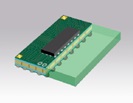 |
Tamura develops solder paste for semiconductor packages, which is approved for use by a major U.S. semiconductor manufacturer the following year. | |
| 【Heightening of Environmental Consciousness】 | |||
| 2000 -2009 | 2000 |  |
Tamura implements comprehensive lead-free solutions to promptly comply with enforcement of the RoHS directive in 2006. The lead-free response for soldering systems is especially popular and swiftly propels Tamura to global market share leadership in reflow devices. |
| 2003 | 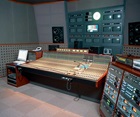 |
Tamura audio mixing consoles and other digital broadcasting facilities are delivered to television stations in preparation for terrestrial digital broadcasting. | |
| 2008 | 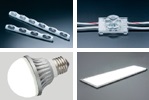 |
Tamura begins mass production of energy-saving LED lights made possible by the fusion of LED application technologies developed for vending machine display buttons and power source technologies. | |
| 2009 | 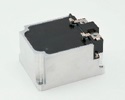 |
The era of practical hybrid vehicles arrives. Tamura reactors are adopted for use in hybrid vehicles, and mass production begins. | |
【Soaring Popularity of Smartphones and Expansion into the Energy Market】 |
|||
| 2010 - |
2010 |  |
Tamura develops resists for black absorbers and FPCs and applies them to smartphones and tablets. |
| 2010 | 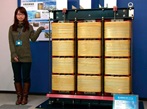 |
Tamura enters the market for large transformers and reactors used in renewable energy, railway, plant, power transmission and distribution, and other applications on a full-scale basis. | |
| 2011 |  |
Tamura, the market share leader in deliveries of audio mixing consoles to Japanese broadcast stations, releases the NT880, the top-of-the line digital audio mixing console, which achieves high-speed audio processing, compactness, and low power consumption. | |
| 2013 | 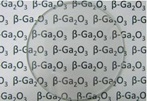 |
Tamura achieves the world’s first gallium oxide (Ga2O3) MOS transistor, opening the way to practical application of innovative next-generation semiconductor power devices from Japan. | |